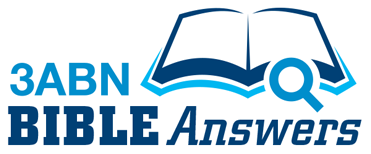What resources can help me study the Bible?
It is our privilege to study the Bible and apply the highest scholarship to our study. Paul said to Timothy, “Be diligent to present yourself approved to God, a worker who does not need to be ashamed, rightly dividing the word of truth” (2 Timothy 2:15). Here are six useful tools that are accessible to most Bible students. With any Bible text or topic, you can go as deep as God leads in your study:
1. Pray for the Holy Spirit. The Bible is inspired by the Holy Spirit, and He helps us to understand it correctly. Without the Holy Spirit we will undoubtedly come to personal conclusions and opinions based on our own human wisdom, instead of God’s truth.
2. A Bible Concordance. The word concordance comes from a Latin root that means “to agree.” A concordance is more than just a tool to help us find the reference for a verse we’re thinking of; it’s an alphabetical index of every verse in the Bible where that specific word appears. For example, if we look up the word Heaven, we’ll find a list of every verse that contains that word. This is helpful for two reasons: First, we can easily find and study everything the Bible says about a topic like Heaven, or angels, or another Bible subject. Second, if we want to understand what a word or concept means in one text, we can quickly find other texts that mention that word to help us understand its meaning.
There are several things to keep in mind when using a concordance:
– Each concordance is linked to a specific Bible translation. A concordance for the King James Version is not the same as a concordance for the New International Version.
– Concordances range in size. A concordance printed at the back of a Bible may be as few as 30 pages and include only the most prominent words and texts. On the other hand, an Exhaustive Concordance will list every single occurrence of a word—even words like “a,” “the,” and “and.” It will be a large book with over 1,500 pages.
– To save space, a concordance will not include whole verses. It will include just the first letter of the featured word as well as a few words before and/or after the word to help you see briefly how the word is used. For example, if you were searching for “pray,” one entry would be: “men always ought to p ………… Luke 18:1”
– Today, concordances can be found online.
3. A Bible Commentary – A commentary adds explanatory comments on what a Bible text means. These comments may point out connections between other Bible passages, the meaning of words in the original languages, Bible customs, and theological interpretations. Keep in mind that a commentary is a human explanation of a text. Because of this, it is important to know who wrote the commentary. Some commentaries can be very lengthy and include many volumes, while others are much shorter. Modern study Bibles often include a very brief commentary at the bottom of their pages. To purchase a trustworthy commentary often involves an investment of money. A commentary can explain one verse at a time, or cover broader sections. Here are some Bible commentaries that many Bible students consider trustworthy:
The Seventh-day Adventist Bible Commentary – A set of seven volumes covering the entire Bible.
Matthew Henry’s Bible Commentary – Written in the 1700s, it is accessible online and offers helpful insights into many passages.
The Andrews Bible Commentary – This short two-volume set covers major questions about Bible texts.
Jamieson, Fausset, and Brown’s Commentary – Written in the 1800s, it is also accessible online.
4. A Cross-reference tool. A cross-reference tool will lead you to other texts in the Bible that cover the same theme or story. Some Bibles have this as a narrow center column, or as footnotes. The cross-reference tool helps you find texts that other Bible students have indicated are helpful in understanding a particular text. The most well-known cross-reference tool, which is available online, is called the Treasury of Scripture Knowledge (TSK).
5. Strong’s Greek & Hebrew Concordance. This resource is not only available in printed form, but can be used with online tools like the Logos Bible software, BibleHub.com, or the BlueLetterBible.org. Using Strong’s Concordance, you can learn the range of meanings for how a certain word has been used in the original language, as well as the meaning of its root words.
6. A Bible Dictionary. A Bible dictionary explains Bible locations, characters, concepts, and customs. We are centuries removed from any of the Bible stories, so what the first audience understood by their common experience may seem foreign to us. A Bible dictionary can help bring the Bible forward in time to make sense to us today.
7. Bible Book Introductions. Many study Bibles or commentaries will include a brief overview of each Bible book that describes who wrote it, the book’s background, its major themes, key verses, and organizational outline. This big-picture overview can make the Bible easier to understand, whether we’re reading it for the first time or are looking for a fresh perspective that adds greater depth to what we already know.
